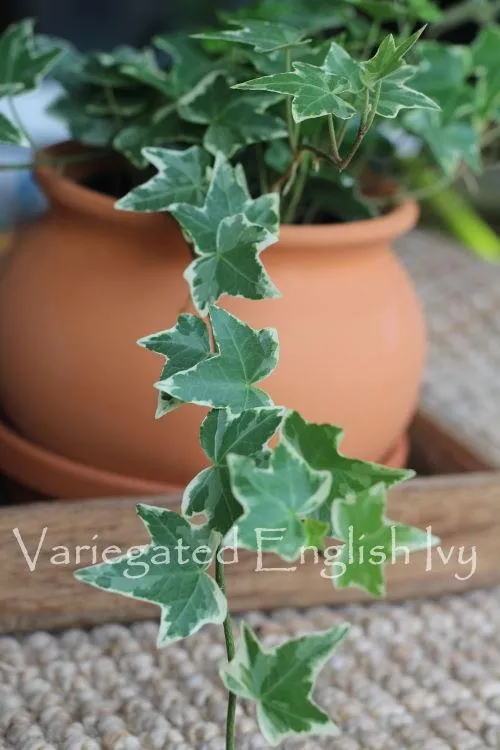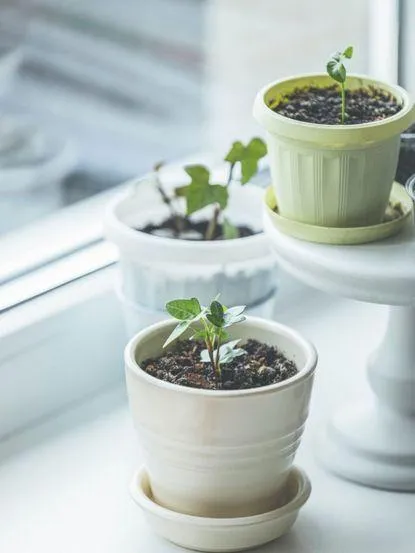The Complete Guide to English Ivy Propagation
If you’re looking to grow more English ivy (Hedera helix) in your garden, propagating it from cuttings is the easiest and most affordable way to do so. As an avid gardener myself, I’ve had lots of experience rooting ivy cuttings over the years. In this article, I’ll share all the tips and tricks I’ve picked up to help you succeed at propagating this versatile vine.
Understanding English Ivy Growth Habits
Before getting started, it helps to know a bit about how English ivy grows. As a climbing vine, it uses tiny clingy rootlets called adventitious roots to grab onto surfaces and climb upwards. At the same time, it sends out runners that produce new plants. Using this natural growth process as our guide, we can trigger new plant growth by encouraging adventitious root formation from stem cuttings.
Taking Hardwood Cuttings in Winter
The best time to take cuttings from English ivy is in late fall through early spring when the stems are dormant, basically known as the plant’s “winter” period. This allows the maximum time for roots to develop before new growth starts in spring. Select hardy, mature stems that are at least 6-8 inches long. Use sharp pruners to remove cuttings below a node (leaf scar).
Propagation Medium and Containers
For rooting the cuttings, you’ll need a well-draining propagation mix. A standard recipe is one part perlite to one part peat moss. You can also use a seed-starting mix. Place the soil mix in shallow containers like seed trays or nursery pots. A four-inch pot works well for one ivy cutting.

Preparing the Cuttings
Trim the leaves from the bottom half of each stem to reduce moisture loss. Dip the cut ends into rooting hormone powder to encourage root growth. This step isn’t 100% necessary but it kind of helps. Use a sharp knife or pruners sanitized with rubbing alcohol.
Planting and Caring for Cuttings
Plant the cuttings about 1/2 to 1 inch deep in the containers, spacing a few inches apart. Gently firm the soil around each one. Keep the soil lightly moist but not soaked. Place the containers in a location with indirect sun, like a garage or patio, where temperatures stay between 60-75°F. Check soil moisture twice a week—let it dry out slightly between waterings.
Identifying New Growth
It takes 4-8 weeks for roots to develop depending on conditions. Look for new green shoots emerging from the nodes as a sign of successful rooting. You may also see fine white roots breaking through the soil line. Once well rooted, the cuttings can be transplanted into garden beds or pots. Water regularly and give them partial sun as they establish.
Alternative Spring Cuttings
You can also root ivy cuttings in spring using new soft growth. Simply trim 4-6 inch stems, treat with rooting hormone, and plant in the propagation mix. Keep them in a warm, sheltered spot and maintain consistently moist soil. Roots should develop within 3-4 weeks and the cuttings can be potted up. I swear by this method for increasing my ivy collection each spring!

Layering Technique
Here’s one more trick I like to use – layering. In late spring or summer, select an ivy stem trailing along the ground and remove leaves from a 6-inch section. Bury that part under an inch of soil and weigh it down with a rock. Roots will form along that section within a couple months. Once established, cut the layered stem from the parent plant and transplant the new rooted section.
Dealing with Potential Pests or Problems
Ivy cuttings are pretty low maintenance overall but a few pests to look out for include spider mites, scale insects and mealybugs. Keep an eye out for their telltale webbing or tiny bumps on leaves and stems. Quickly isolate and dispose of any infected cuttings. A insecticidal soap spray should handle small infestations. Root rot from soggy soil is also possible, so make sure medium drains well and doesn’t stay constantly soaked.
Tips for Optimal Rooting Success
- Take cuttings in winter from mature, healthy plants.
- Use a well-draining mix and keep moisture consistent.
- Maintain moderate temperatures around 65-75°F.
- Treat cuttings with rooting hormone if possible.
- Be patient – it may take 4-8 weeks to see new growth.
Basically if you follow those steps, your English ivy propagation attempts should be successful most of the time. Let me know if you have any other questions! Growing plants from cuttings is truly rewarding. I still remember the amazing feeling the first time one of my ivy cuttings sprouted roots years ago. Wishing you the best of luck with your ivy propagation project!
In summary, English ivy is a super easy plant to propagate through stem cuttings. Using the winter dormant cutting method outlined here, you’ll be well on your way to growing unlimited new ivy plants for your garden. One more thing – if any cuttings don’t make it, no sweat. It kind of happens sometimes no matter what tips and tricks you follow. But most should take if cared for properly. Happy propagating!

English Ivy Propagation Methods
| Method | Time to root | Success rate | Difficulty |
|---|---|---|---|
| Stem cuttings | 2-4 weeks | High | Easy |
| Leaf cuttings | 6-8 weeks | Moderate | Moderate |
| Layering | 8-12 weeks | High | Easy |
| Dividing mature plants | Immediate | Very high | Easy |
| Seed propagation | 6-12 months | Low | Difficult |
FAQ
-
How do you propagate english ivy from cuttings?
Basically, english ivy is straightforward to propagate from cuttings. Cut pieces about 6 inches long from vines that have roots. Remove lower leaves and dip the stems in rooting hormone. Plant the cuttings in potting soil and keep the soil moist. In a couple months, you’ll see new growth.
-
When is the best time to propagate ivy cuttings?
The ideal time to propagate is in late spring or early summer. The new growth makes it easier for cuttings to form roots. Nevertheless, you can try taking cuttings in other seasons too. As long as the cuttings and soil stay moist, propagation can work year-round.
-
How long does it take for ivy cuttings to root?
Most sources say it takes around 4 to 6 weeks for english ivy cuttings to put out roots. However, your timing may vary. Factors like temperature, light, and moisture levels can influence rooting. Be patient and only gently remove a cutting from its pot to check on new roots. Maybe leave them an extra couple weeks to be safe.
-
Can you propagate ivy from a single vine?
Yes, you basically can continue propagating new plants from a single english ivy vine indefinitely. Snip off portions with 3 or more leaves and stem. Each clipping has the potential to grow into an entirely new plant. Over time, one vine can increase to many plants. So in a way, one ivy vine is all you need to start increasing your houseplant collection.

-
What is the success rate for rooting ivy cuttings?
Most gardeners report a very high success rate of around 80% or more for english ivy cuttings. As long as you follow proper propagation methods, the cuttings should punch out new roots without too much trouble. Of course, beginners may have slightly lower odds until they gain experience. Still, ivy is one of the easier plants to propagate from stems.
Overall, propagating english ivy is a fun project that shouldn’t take much effort. The process is simple – just clip, plant, water. In no time, your cuttings will be rooted and growing into additional ivy vines. While waiting, you’ll be stunned by how quickly the roots develop underground. Just don’t forget to separate and re-pot the new plants once established!
